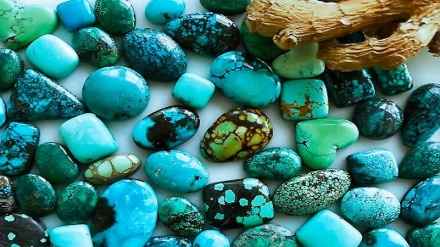Iranian Market (47)
Hello dear listeners and welcome to this episode of our weekly program, the Iranian Market. In this episode, we’re going to discuss one of the Islamic Republic of Iran’s agricultural products namely, barberry (zereshk).
Keep us company until the end of the program.
The Islamic Republic of Iran has a special potential for producing barberry and exporting it to many countries around the world. Barberry is consumed in various cuisines including Iranian, Spanish, French, Russian. In Iran, a special food is made with barberry called Zeresk Polo. Baked chicken with rice is served with slightly fried barberry spread on it. This is one of the popular and delicious foods in Iran. Barberry is also used for making donuts, juice, and some special cakes. The usage of barberry as a medicine dates back to over 2500-years. Barberry has been used for centuries around the world.
Barberry is a genus with about 450-500 species of evergreen shrubs with a height of one to five meters, thorny shoots. It is found throughout the temperate and subtropical regions of the world.
Iran produces different types of barberries. The two famous types are Pofaki and Anari barberries.
In order to produce the Pofaki type of barberry, the branches of the plant are cut off with the fruit on it and then it will be put on wooden bars in a place exposed to continuous air stream on four sides. The drying process normally takes four to five months. After the barberries are dried, they are separated from the branches with a special aparatus and then passed through a vacuum machine to clean them.
Also, in order to produce the sundried type of barberries, the fruits are taken off from the branches and placed under direct sunlight to dry. The drying process normally takes four weeks.
As we mentioned, barberry has medicinal effects. It has been used in eastern traditional medicine to treat diarrhea, reduce fever, improve appetite, and relieve stomachache.
Today, it is widely used for medicinal purposes in Iran, including for gallbladder disease and heartburn.
Barberry is also used to ease inflammation and infection of the urinary, gastrointestinal, and respiratory tracts as well as yeast infections.
According to the official figures of the Customs Office, the Islamic Republic of Iran exported nearly 360 tons of barberry worth over 1.9 million dollars to 31 countries in 2017.
Germany was the main customer of Iranian barberry during this period.
Among other exporting destinations for the product mention can be made of Switzerland, Chile, Qatar, Canada, Australia, France, Britain and the US.
South Khorasan province produces 98% of the country’s barberry and the remaining 2% is cultivated in Khorasan Razavi, Kerman and Yazd provinces.
Per capita barberry consumption in Iran amounts to 200 grams per year.
According to official statistics, Iran is home to 98% of barberry production in the world. Statistics also show that the cultivation of barberry in Iran has created fifty thousand jobs directly or indirectly.
AE/SS


